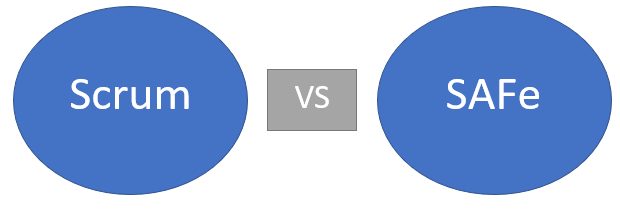
Agile SAFe and how it compares to Scrum
Agile SAFe (Scaled Agile Framework) is a popular framework for managing software development projects at enterprise scale. It provides a comprehensive and flexible approach to Agile development that has proven to be effective for many organizations. In this blog post, we’ll explore the benefits of Agile SAFe and compare it to Scrum, a widely adopted Agile methodology.
Benefits of Agile SAFe:
- Scalability: Agile SAFe is designed to help organizations scale Agile development across the enterprise. It provides a flexible framework that can be customized to meet the specific needs of different teams and projects, while ensuring a consistent approach to Agile development across the organization.
- Integration with other frameworks: Agile SAFe can be easily integrated with other methodologies, such as Scrum, Kanban, or DevOps, to provide a comprehensive approach to software development. This allows organizations to leverage the strengths of different methodologies and create a tailored approach that meets their specific needs.
- Focus on value: Agile SAFe places a strong emphasis on delivering value to the customer. It encourages teams to prioritize features and functions that are most valuable to the customer, and to deliver them quickly.
- Collaboration: Agile SAFe encourages collaboration and communication across teams and departments. It provides a framework for cross-functional teams to work together and share information, knowledge, and best practices.
- Improved quality: Agile SAFe incorporates regular testing and inspection of the product to ensure that it continues to meet quality standards as development progresses. This helps organizations to catch and fix issues early in the development process, reducing the risk of costly defects later in the project.
Comparing Agile SAFe and Scrum:
So, how does Agile SAFe compare to Scrum? Here are some key differences between the two approaches:
- Scale: Agile SAFe is designed to help organizations scale Agile development across the enterprise, while Scrum is more focused on smaller, cross-functional teams.
- Process: Agile SAFe has a more structured approach to development, with a focus on value, collaboration, and quality. Scrum is more flexible, and places a stronger emphasis on adaptability and responsiveness to change.
- Teams: Scrum is well-suited to smaller, cross-functional teams, while Agile SAFe may be more appropriate for larger, more complex teams.
- Project type: Scrum is a good choice for projects that are complex, rapidly changing, and unpredictable. Agile SAFe may be a better choice for projects that require a comprehensive and consistent approach to Agile development across the enterprise.
In conclusion, Agile SAFe and Scrum are both effective methodologies for managing software development projects. The right choice will depend on the specifics of your project and the needs of your team and stakeholders. If you are looking for a comprehensive and flexible approach to Agile development that can be scaled across the enterprise, Agile SAFe may be the better choice. If you are working on a smaller, rapidly changing project, Scrum may be a more appropriate choice. Regardless of which approach you choose, both Agile SAFe and Scrum place a strong emphasis on collaboration, flexibility, and customer focus, and will help you deliver high-quality products in a rapidly changing environment
